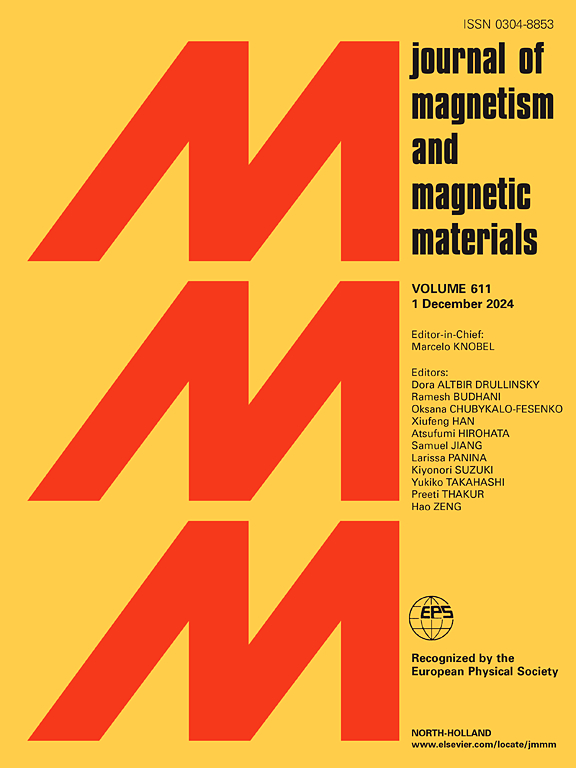基于自适应递归算法的电磁轨道发射器瞬态电磁场分析
IF 2.5
3区 材料科学
Q3 MATERIALS SCIENCE, MULTIDISCIPLINARY
引用次数: 0
摘要
电磁轨道发射的建模是一个重要的方面,为发射系统的设计和优化提供了坚实的理论支持。综合考虑电枢形状、钢轨形状和电流集肤效应等因素,建立了h型电枢在电磁导轨发射过程中的动态电磁场模型。为了获得有效的解,提出了一种自适应递归数值分析方法。该方法对各变量的积分区间进行递归分割,一旦积分节点确定,采用自适应Simpson数值积分进行回归。这成功地实现了动态电磁场模型的快速分辨率,产生了时变的电感梯度。随后,采用龙格-库塔法计算了电枢的速度和位移曲线。实验验证表明,该模型计算的电枢初速误差为2.28%,发射过程中最大误差为4.48%。这些结果有力地验证了所提出的模型和自适应递归数值分析方法,为电磁发射技术的理论分析提供了有力的依据。本文章由计算机程序翻译,如有差异,请以英文原文为准。
Analysis of transient electromagnetic fields in electromagnetic rail launcher using an adaptive recursive algorithm
Modeling the electromagnetic rail launch is a critical aspect that provides solid theoretical support for the design and optimization of launch systems. This paper comprehensively considers factors such as armature shape, rail shape, and the skin effect of current to establish a dynamic electromagnetic field model for an H-shaped armature in electromagnetic rail launch. To achieve efficient solutions, an adaptive recursive numerical analysis method is proposed. This method recursively segments the integration intervals of various variables and employs adaptive Simpson’s numerical integration for regression once the integration nodes are determined. This successfully enables the rapid resolution of the dynamic electromagnetic field model, yielding a time-varying inductance gradient. Subsequently, the Runge-Kutta method is used to calculate the velocity and displacement curves of the armature. Experimental validation of the model indicates a 2.28% error in the calculated muzzle velocity of the armature and a maximum error of 4.48% during the launch process. These results strongly validate the proposed model and the adaptive recursive numerical analysis method, providing strong evidence for theoretical analysis in electromagnetic launch technology.
求助全文
通过发布文献求助,成功后即可免费获取论文全文。
去求助
来源期刊

Journal of Magnetism and Magnetic Materials
物理-材料科学:综合
CiteScore
5.30
自引率
11.10%
发文量
1149
审稿时长
59 days
期刊介绍:
The Journal of Magnetism and Magnetic Materials provides an important forum for the disclosure and discussion of original contributions covering the whole spectrum of topics, from basic magnetism to the technology and applications of magnetic materials. The journal encourages greater interaction between the basic and applied sub-disciplines of magnetism with comprehensive review articles, in addition to full-length contributions. In addition, other categories of contributions are welcome, including Critical Focused issues, Current Perspectives and Outreach to the General Public.
Main Categories:
Full-length articles:
Technically original research documents that report results of value to the communities that comprise the journal audience. The link between chemical, structural and microstructural properties on the one hand and magnetic properties on the other hand are encouraged.
In addition to general topics covering all areas of magnetism and magnetic materials, the full-length articles also include three sub-sections, focusing on Nanomagnetism, Spintronics and Applications.
The sub-section on Nanomagnetism contains articles on magnetic nanoparticles, nanowires, thin films, 2D materials and other nanoscale magnetic materials and their applications.
The sub-section on Spintronics contains articles on magnetoresistance, magnetoimpedance, magneto-optical phenomena, Micro-Electro-Mechanical Systems (MEMS), and other topics related to spin current control and magneto-transport phenomena. The sub-section on Applications display papers that focus on applications of magnetic materials. The applications need to show a connection to magnetism.
Review articles:
Review articles organize, clarify, and summarize existing major works in the areas covered by the Journal and provide comprehensive citations to the full spectrum of relevant literature.
 求助内容:
求助内容: 应助结果提醒方式:
应助结果提醒方式:


